Come learn the entire process that we undertook to take an 15 year old site that hardly ranked for anything to generating almost $10,000 per month in revenue!

Quick Navigation
Website History
Truthfully, we didn’t find this website… it found us.
We were initially introduced to this website in 2020 by getting hired to perform technical work on it at our SEO agency 201 Creative.
The person running this website was a notable figure in their industry, and had been running the website for several years. He had acquired it off of the founder. They had established the website as a trusted resource in the industry, and had built a small but loyal following.
This website had been around since the mid-2000’s. At one point in 2014, the website ranked for a healthy number of keywords and was driving organic traffic. Over time, though, the content atrophied and became out of date. Rankings slipped.
The site was a DR 56 and had a wonderful backlink profile, full of niche-relevant links.
This person didn’t know much about the technical side of running a website. They hired our marketing agency to help them transfer the site to a new theme. It was during this process that we discovered all of the tech debt this website had.
Throughout the process of transferring the site, I became friends with the owner. We talked about my agency’s business model, and how we also build websites on the side. By the end of 2020, the owner asked me to put in an offer on the website.
Buying the Website
Given the tech debt, we knew this website would come with a lot of work. We also knew the content was out of date. But, it had a wonderful history and a great backlink profile.
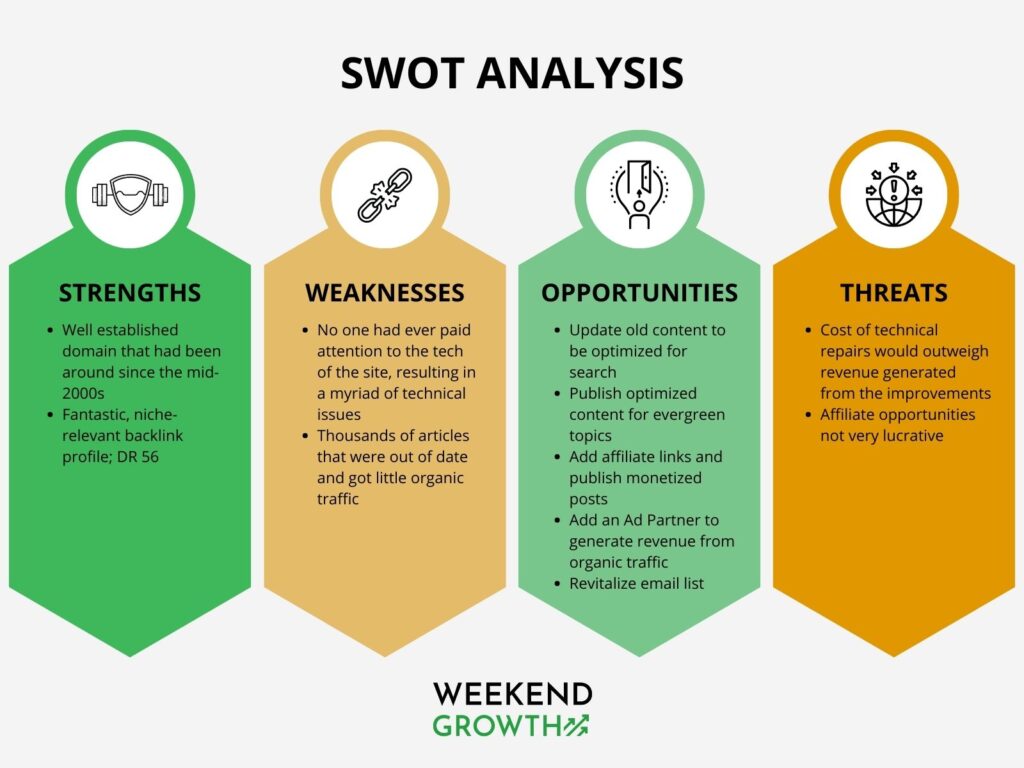
Strengths
- Well established domain that had been around since the mid-2000s
- Fantastic, niche-relevant backlink profile; DR 56
Weaknesses
- No one had ever paid attention to the tech of the site, resulting in a myriad of technical issues
- Thousands of articles that were out of date and got little organic traffic
Opportunities
- Update old content to be optimized for search
- Publish optimized content for evergreen topics
- Add affiliate links and publish monetized posts
- Add an Ad Partner to generate revenue from organic traffic
- Revitalize email list
Threats
- Cost of technical repairs would outweigh revenue generated from the improvements
- Affiliate opportunities not very lucrative
The site made money for selling advertising to vendors, bringing in around $2,000/month at the time of sale. That was its only source of revenue. This type of revenue isn’t as stable or scalable as other forms of website revenue, like affiliate and third party ad revenue.
We settled on a price in the mid five figures. To help mitigate the upfront cost of technical repairs, we negotiated a down payment, with monthly payments over the course of the first year.
Initial Evaluation
Where to start? The most important thing is to come up with a plan, and THEN work the plan. Its tempting to “dive in” right away and roll up your sleeves, but we’ve found you’ll waste a lot of time that way.
We started with our flagship evaluation reports at 201 Creative: a Technical Site Audit and Strategic Content Plan.
Technical Site Audit
We knew the site had a lot of tech debt, as it had been around since the mid 2000’s and no one had ever paid attention to any of the technical details.
We started by performing a standard Site Audit, the exact same we perform for clients at 201 Creative. Our Site Audits are incredibly robust and analyze a site for four major components:
- Technical Heath
- Site Speed
- Site Content
- Site Links
Most of our audits end up being 25-30 pages long, and include dozens of spreadsheets to work through. They are very comprehensive and, as a result, often yield a lot of technical work to do.
With the audit results back, we knew we had our work cut out for us. Here is a screenshot from our Asana task list for this project:
That isn’t even everything!
Honestly, this is what you sign up for when you purchase a website that is almost two decades old, and hasn’t ever had anyone paying attention to the technical details. We knew this going in, but it was still a bit shocking how much work was needed!
However, it’s so important to get a website’s technical details dialed in. All websites have a certain number of small issues, but if your site has large issues, it’s going to be challenging to substantially grow the site over time.
Every audit is different. Here is what one affiliate site owner had to say about this Site Audit from 201 Creative:
Reach out to us at 201 Creative to get more information about a Site Audit for your website.
Strategic Content Plan
As alluded to before, this website had serious tech debt, but it didn’t stop there.
Content had been published to this website in true “blogger style”, akin to the early 2000’s. This was the time period where people published content on their blog in a more conversational style, relying on comments to carry the bulk of the conversation.
For the first 5-10 years of this website, daily blog posts had been produced about trending topics in the industry, usually as a result of reader questions. This created lively discussion and debate in the comments.
It’s also what led to the website losing popularity over the past few years. People just don’t engage in blog posts in this way anymore. Discussion has moved to social media, which is where most people discuss and debate industry topics.
This meant that we had a website with a lot of content, but very little of it that ranked.
Since the content was always trending topics, there was very little that was evergreen and still relevant.
Since the bulk of the content was in the comments, most of the articles were “thin”.
And since keyword research had never been done, most were about topics that would never rank anyways.
Our Content Audit and Plan at 201 Creative addresses all of these areas and more. We cover:
- Competitor analysis
- Backlink Gap analysis
- Current Content analysis (including recommendations for what to keep, what to update)
- Future Content Plan (including keyword research)
After finishing the plan, we knew we had a lot of content to delete, which we’ll discuss more below. There were some articles that we could update, but most needed to be deleted.
Get in touch with us at 201 Creative to get more information about a Content Plan for your website.
First Steps
Technical Fixes
There were a lot of technical problems that you expect, and we immediately worked on:
- Set up proper canonicalization between http and https
- Remove redirect chains
- Remove links to 404 pages
- Add meta descriptions
It was really clear from the Audit that this site was going to be a strong candidate for deleting a lot of its content. As a result, fixing many of the technical problems we found was delayed until we deleted content.
Besides the immediate problems, we had a ton of technical work to do on the website. Here are a few of the high level areas we focused on:
Hosting
Bleh. I won’t rat out who was hosting this site prior to us buying it, but it was SLOW. And we got a lot of 500 server errors that were making their way into our Google Search Console – not good.
We have a great working relationship with Kinsta, and love recommending them to our clients. We moved this site over to Kinsta and immediately saw our speed increase and the 500 errors disappear.
Change Navigation in Menu
We determined that crawl depth was an issue, and immediately improved this by changing the menu options. This also improved the user experience for visitors.
Adjust Categories
Some categories had hundreds of posts, others had 1 or two. We evaluated and consolidated the number of categories, and then re-categorized the entire website.
We used a WordPress plugin WP Sheet Editor so that we could do this task in spreadsheets and then import into WordPress.
Add SEO Plugin
This website did not have an SEO plugin, so we installed our favorite one: Rank Math. This allowed us to add the proper schema to articles and pages, breadcrumbs to articles, and a whole lot more.
Rank Math’s paid option is well worth the money, in our opinion. We install it on all of our sites.
Update Footer
The Footer was simple and out of date, while containing very little information about the website. We updated it to include relevant information about the website, important navigational links, and updated copyright information.
Add an About Page
This website was a true authority in its niche, but had no About page. We saw this as both a huge problem and a huge opportunity.
We built a robust About Page, featuring the website’s long history in the niche, and highlighting all of its different authors and contributors. We added About Page schema to these posts through Rank Math.
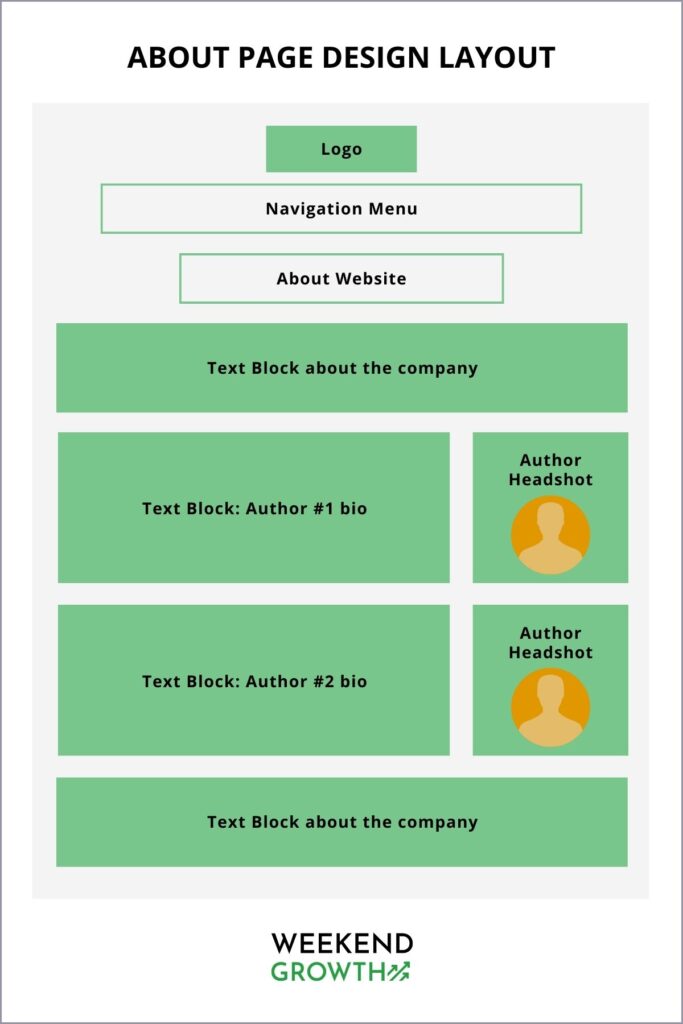
Create Author Pages
Authors were utilizing the native WordPress taxonomy but didn’t have anything else added. No bio, no text about who they were.
There were a lot of contributing authors who were experts in their field. We wanted to highlight each of their individual expertise so that readers understood who was writing the article.
For every Author, we expanded their page to include relevant and detailed information about them. We added relevant author schema to these pages through Rank Math.
Add Author Bios to posts
Authors were not visible in the post, so we added custom Author bio boxes to the top and bottom of posts. These author boxes included their headshot and a snippet of their bio. They linked to their Author page.
Here’s an example from this post on Weekend Growth:
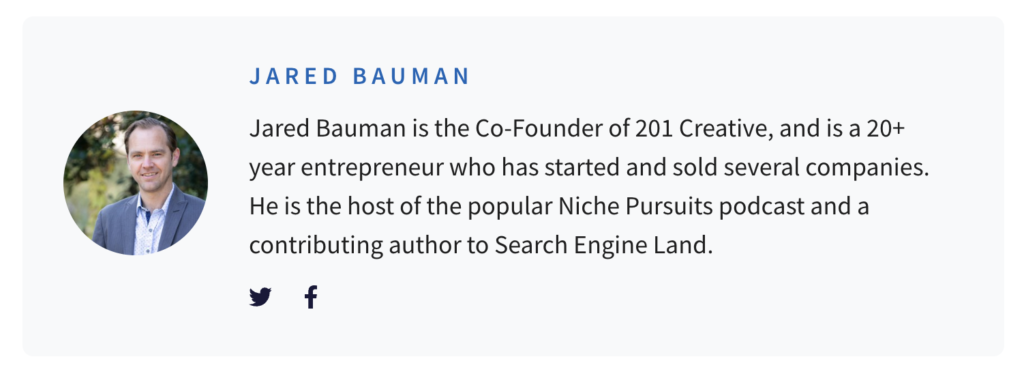
Deleting Content
As mentioned above, the website had a LOT of blog content – and the vast majority of it did not rank. This is because:
- The content was not evergreen – it was about something that people did not search for on an ongoing basis.
- The content was thin – most posts were 200-400 words.
- The content was not optimized – most lacked headers and was just a long form paragraph, terrible for readers!
There were a handful of articles that were ranking for some keywords, and even fewer that had Top 10 rankings. For the majority of those, we set them aside to update and optimize.
For the rest, it was clear that the best course of action was to delete the content. I’ve written for Search Engine Land on the success we have had deleting content in bulk.
We moved all of the articles to Draft. In total, we moved 3,138 articles to Draft.
When deleting content (moving to Draft), every article was evaluated for the following:
- DELETE and 410: Articles with 0 backlinks. The 410 designation tells Google crawlers that this content is permanently deleted and they don’t need to attempt to crawl it again.
- DELETE and 301: Articles with 1 or more backlinks. We set up a 301 redirect to the most relevant URL in order to preserve the SEO benefits from the backlink(s).
We didn’t stop there. With the 3,000+ articles gone, we had to update any internal links that were pointing to 410 pages. While we were updating those, we also updated the 301 internal links to direct to the final destination.
Needless to say, this process took some time. However, I wrote about how to make this easier using the plugin Link Whisper.
Article Updates
As mentioned, there were a few articles that ranked with enough keywords that it made sense to update them.
In reality, these didn’t turn out to be article updates. After investigating the content, we opted to pick the best keyword, and completely rewrite the article.
So, in essence, we kept the URL, but re-published an entirely different article with an optimized title and blog content.
All told, we updated 54 articles with new content.
Website Redesign
Funny enough, we knew quite a bit about the website’s design, because we had participated in the migration from the old design to the new one. At 201 Creative, we help a lot of companies migrate their websites. The problems that can come from not migrating properly make it a pretty easy decision for a lot of companies.
But, we were only hired to help with the migration – we did not pick the new theme, plugin stack, and setup. It was design-heavy, difficult to update, and caused slow page speeds. We prefer lightweight themes that are fast and easy to update.
We decided to keep the theme and plugin stack mostly the same, as we didn’t want to take on a big project for a website that wasn’t making a lot of money. But, we did redo the home page.
The old home page utilized large images in and old-fashioned “banner style” carousel. It was not user friendly and didn’t promote engagement. It also had very little on the home page and didn’t give users (or crawlbots) much to choose from.
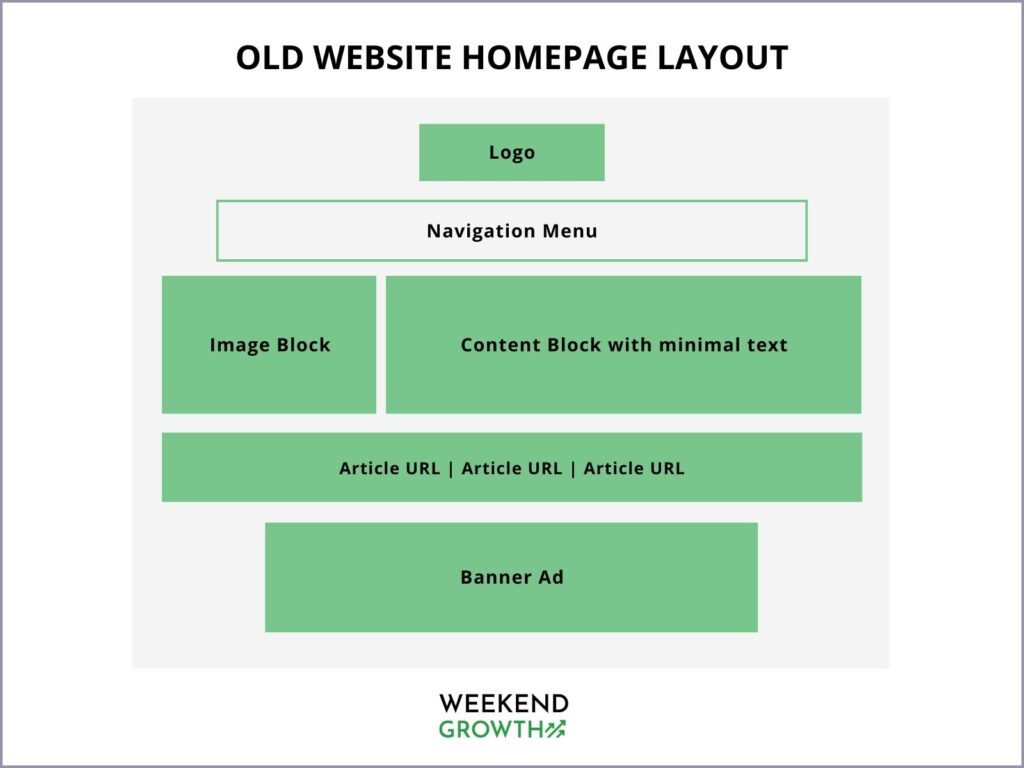
We switched the home page to more of a “newspaper” style layout, with links to our top posts. We featured different categories of the website, and made it easier to navigate.
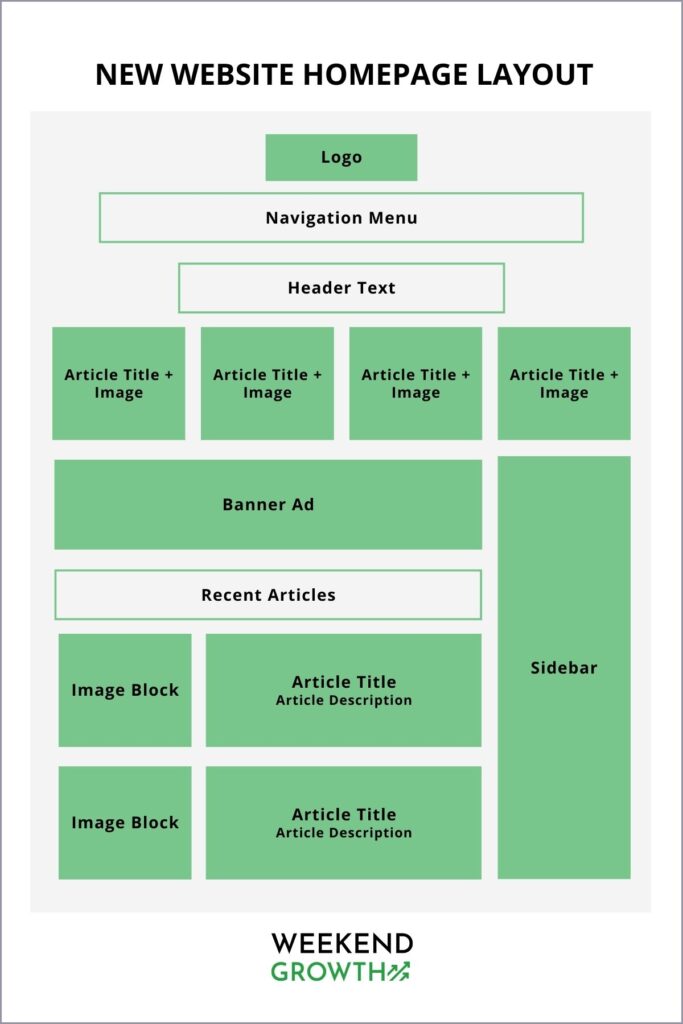
Ongoing Content Push
Several months into the acquisition, we finally had the bulk of technical fixes and repairs done! It was a slog, and took a lot of work from several different teammates. But, we were ready to focus on adding content to the website.
Our Content Plan had outlined the various topical silos and keywords that we should focus on. We had a ton of content gaps that we needed to fill.
Because the website was a DR 56 already, we felt pretty confident that we could target most keywords, regardless of competition.
We decided in doing a two-part approach to our content push:
- Start by targeting high opportunity keywords: from buyer intent topics to high level, cornerstone content, there were some keywords we wanted to go after right away. They would have a high impact on the website as soon as they started ranking.
- Build out topical silos: after those high opportunity articles were published, we were going to focus on creating content in one topical silo at a time. Once a silo was fully flushed out (and only then) would we move on to another topic silo.
High Priority Keywords
What are high priority keywords? The best way I know to put it is that these are the keywords that your website “should” be ranking for, but isn’t.
A bit subjective? Yeah, it is. But, when you’re dealing with a website that has plenty of age and a decent, mid-range DR, you can be a bit subjective about things like this.
For this website, the high priority keywords were topics that were core to our niche that had never gotten written about. Many were affiliate focused keywords. The others were high volume, top-of-the-funnel informational keywords.
These were easy to find using Ahrefs and plugging competitors into their Content Gap.
Topical Silos
Topical authority is so important in today’s Google game. Yes, it’s become a bit of a buzzword, but the foundational elements of it are vital.
You must be topically authoritative for what you want to rank for. That involves having a breadth of content that goes into depth about the topic.
We bought a site that clearly had some topical authority, but a lot of it was due to its age and backlink profile. The website had a lot of really good links for high authority sites in its niche.
However, it was lacking topical authority through its content.
We identified 4 main topical silos for this niche. Each silo had hundreds of keywords we could write content about. A lot of the larger topics come from the same Content Gap analysis we used in Ahrefs.
For the lower volume queries to round out each silo, we use Low Fruits. I love this tool because it quickly helps you prioritize which keywords to go after, based on what is currently ranking in the Top 10.
Low Fruits identifies keywords where the Top 10 results have low authority pages ranking, either because they have a really low domain authority, or are generic domains like Quora and Reddit. All things being equal, these results are usually pretty easy to outrank.
Low Fruits has been kind enough to offer 15% off their pay-as-you-go credits (which is what I use). Use “JARED” at checkout here.
Here’s a screenshot of keyword opportunities for one of the topical silos – look at some of those opportunities! (Noted by the fruit icons on the right. More fruits = more opportunity!)
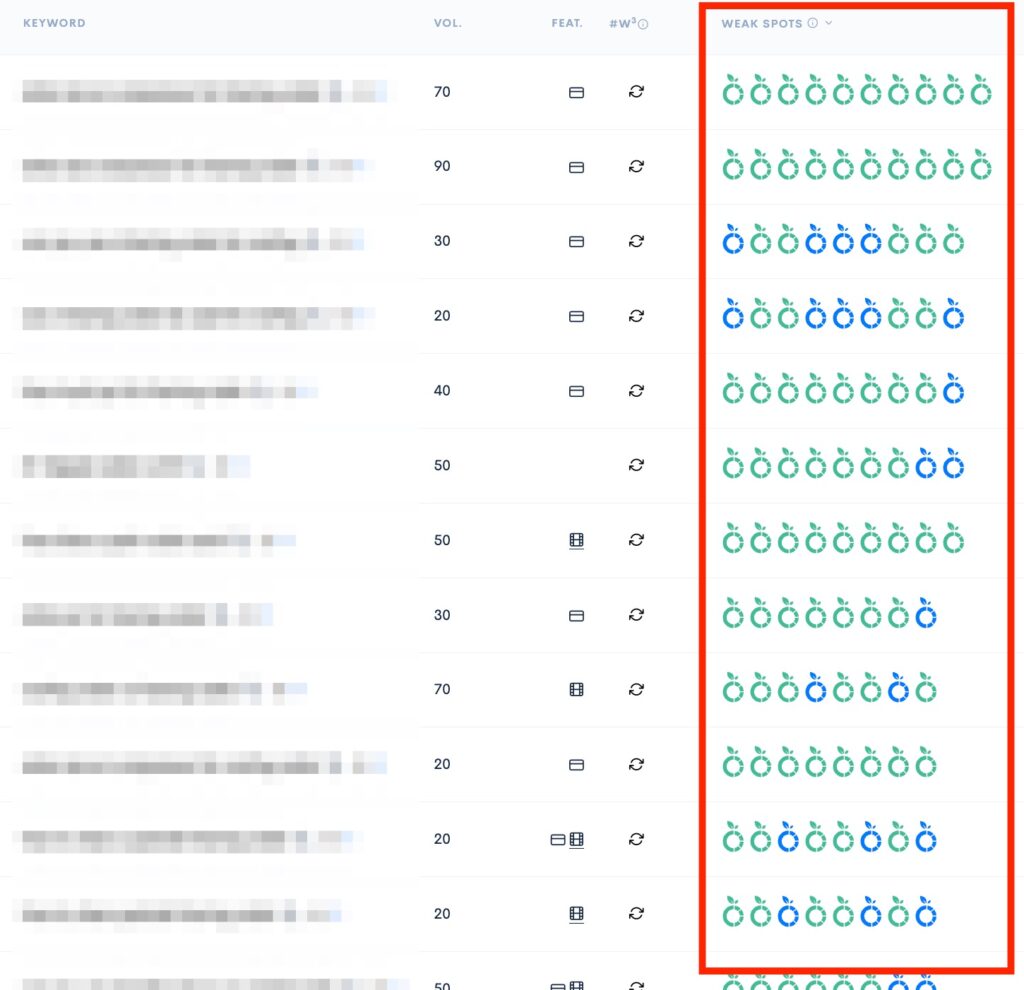
We use keywords found on Low Fruits to build out topical authority. Here’s a graphic, where S1, S2, etc notate different supporting articles:
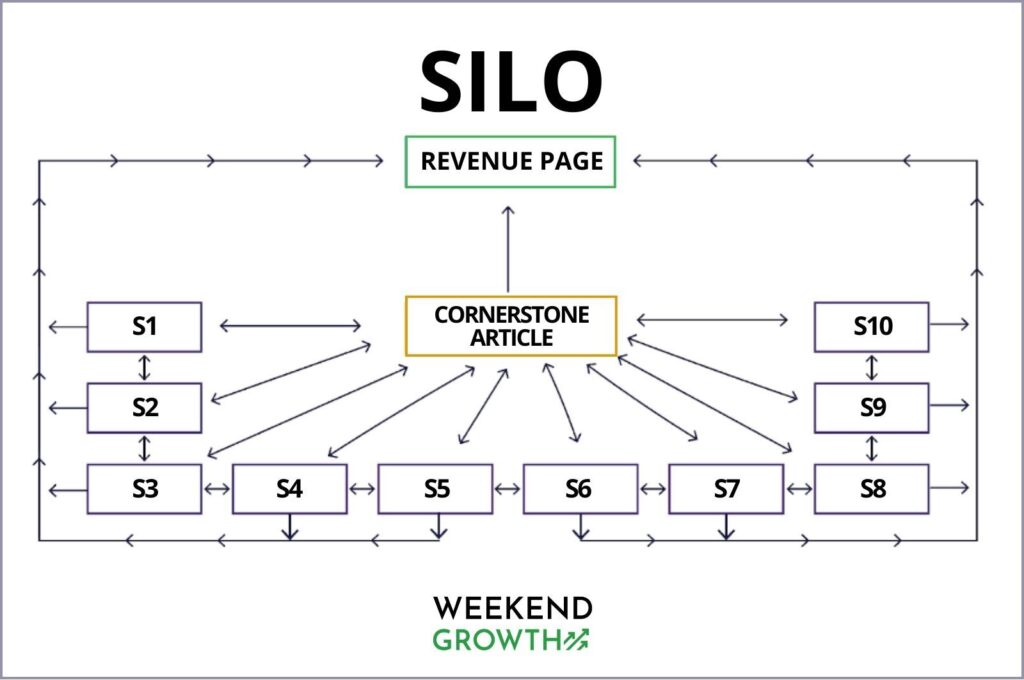
We got to work cranking out content. We knew for this site that we would need to find writers who were experts in this specific niche, because the current audience had a good understanding of the topics covered and the niche in general. If we used generalist writers, our expertise could be compromised, and people could begin losing trust in the site.
We put out ads on Upwork and within Facebook groups, looking for writers who had proven experience in this niche. After thorough testing, we found a handful of strong writers to produce content.
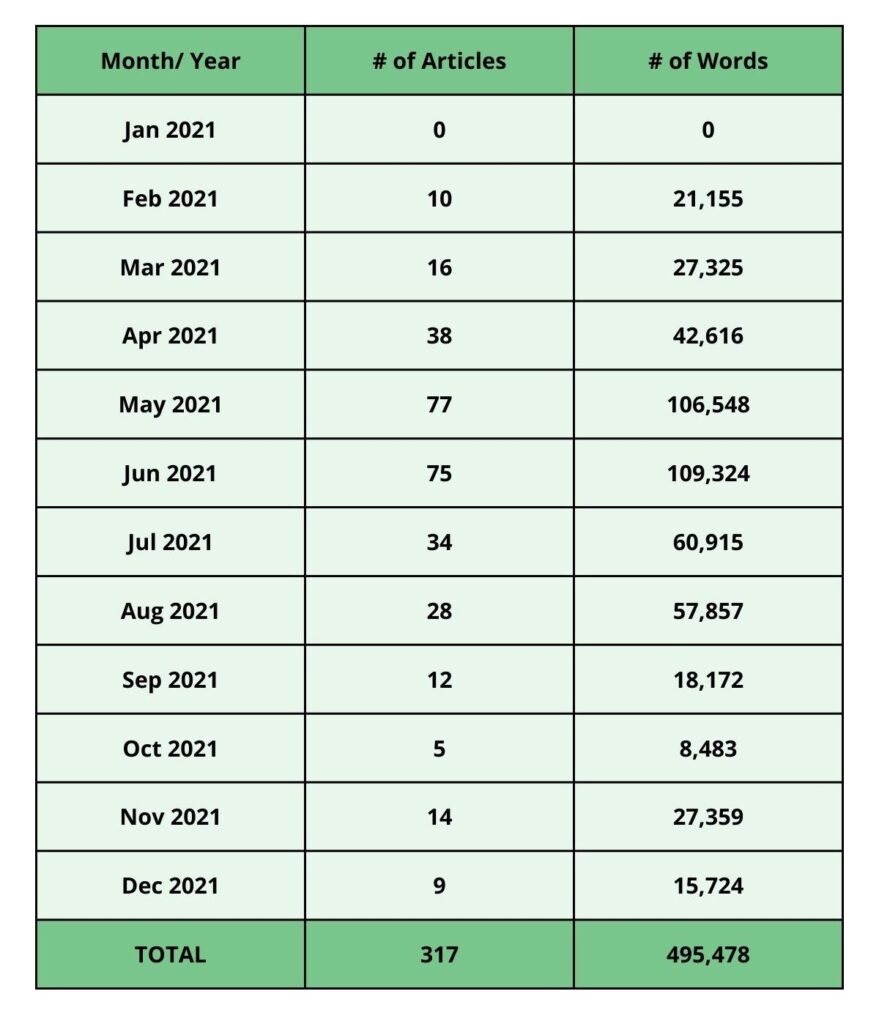
You can see that we ebbed and flowed with our content publishing schedule, publishing a high of 77 articles in May and a low of only 5 articles in October.
This is the nature of how we build websites at 201 Creative. Our client work is our first focus, and our websites share resources. So, some months, when we get really busy in certain areas at the agency, our websites can suffer. Over time, though, it evens out.
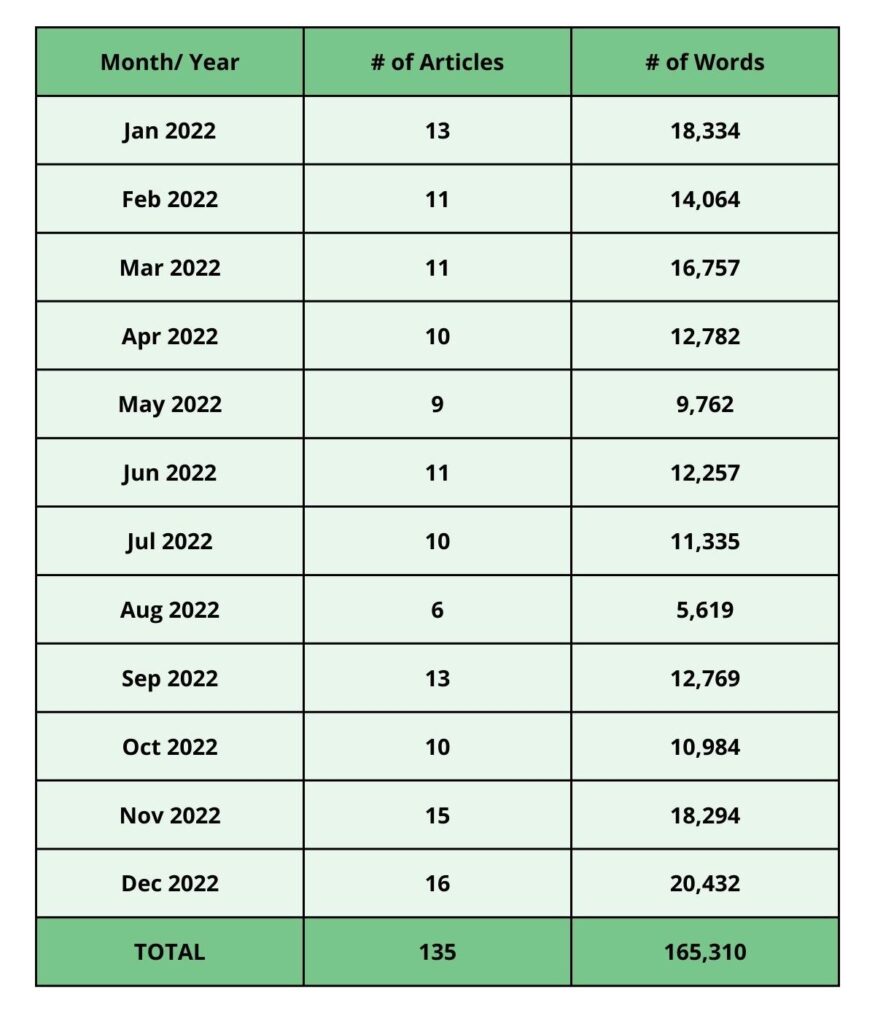
Custom Graphics & Images
We invested in creating custom graphics and/or imagery for this website.
Some articles were how-to in nature, with step by step instructions. These articles really benefit from graphics that visually highlight each of the steps we write about.
Other articles are more practical in nature, and we took custom images of people using various products.
I’m quick to remind people that graphics don’t have to be overly fancy. Sure, custom graphics that are well designed are amazing, but that’s often a huge barrier to entry for a lot of people to create.
Screenshots with arrows and text added can serve as a great graphic to help your reader better understand your guide or instructions. Custom images can be taken with your smartphone, and usually edited in-phone to create a nice looking photo.
Granted, I used to be a professional photographer, so this type of stuff comes naturally to me. But, we also created a course to help content creators take great photos for their websites with just their phones.
Additional Elements
Email List
The website purchase came with a small email list. The list size was 1,857 but it was pretty engaged. Due to the nature of how this website was used, every newly published blog post was automatically emailed out to the entire email list.
Now, this is not considered a best practice in current times, but when this website was publishing the bulk of its content, this was more of a normal practice. They hadn’t been publishing much content over the past few years, so the email list was getting spammed. It was an interesting balance that kept the list engaged but didn’t bombard them.
The website was doing a very poor job of acquiring new email subscribers. There was a box on the home page that allowed you to “Join the Newsletter” (which I hate as a Call-To-Action).
When we acquired the website, we made the following changes:
- Eliminated the auto-send for each new blog post. We knew we would be publishing a lot of content, and this would be way too many emails for people to receive. Plus, this tactic is really out of date.
- Switched email providers to MailerLite. For the price, you just can’t beat what they have to offer – they’re a perfect email provider for niche websites with smaller email lists.
- Added a pop up to all blog posts, offering to share over 50 niche relevant tips in exchange for name and email address.
- Created a simple autoresponder through MailerLite that automatically sent a long-form email packed with the tips, along with a 6 email sequence highlighting the most popular posts on the site.
One of the biggest mistakes I see from website owners is that they don’t immediately set up an email lead generation process with a simple autoresponder sequence. All in, this only took a few hours.
We weren’t generating very much traffic when we first acquired the site. But, this lead generation process works on auto pilot once you set it up. And, you never know how valuable that email list will be (as we’ll see later on in the case study).
Internal Linking
As articles are written, it’s good to include relevant links to related content on your website (internal links). However, just adding internal links “as you go” will leave a lot of internal links left out.
Let’s say that you sit down to crank out the content for a specific Topical Silo.
- When you write article #1, in theory there are no other articles to internally link to.
- By article #10, there are probably a few good internal link opportunities that are live
- By article #50, there are probably plenty of good internal link opportunities that are live
But what about that initial article? It still doesn’t have any internal links!
And article #10? Sure, it probably has a few, but chances are that there have been some really relevant articles that have been posted AFTER this article went live.
So, once we complete a Topical Silo, we go back and add internal links to all of the articles. This is really easy using Link Whisper, as you can isolate a specific Category while adding internal links.
Monetization
Alright, the fun part – making money! This website has a variety of different ways it makes money, lets go through each of them:
Amazon
Yes, we use Amazon Affiliates on our Buying Guides. We tested a few private affiliate networks. While the commission percentage is higher, it isn’t enough to offset the incredibly high conversion rate that Amazon has.
We currently use AAWP on this website for our Amazon buying tables and product links. Having a plugin like this really increases clicks over to Amazon, which leads to more sales. It also stays compliant with Amazon’s terms of service regarding their API, image, star rating, and price details (which is vital)!
AdThrive
We use AdThrive for ads on this website. We have sites with AdThrive, Mediavine, and Ezoic, and I think they are all great for the right situation. In this case, AdThrive has been great to work with and we’re happy with the RPMs.
If you don’t have enough traffic yet to qualify for AdThrive or Mediavine, Ezoic is a great option to start with. You can start earning money as soon as you have traffic, and this can be incredibly motivating.
Ads on Site
We also sell ads directly to companies. These banner and tile ads live in various places on the website.
Some we sell on an ongoing monthly basis, others are short-term campaigns for companies.
Affiliates
While most of our Buying Guides feature Amazon products, we have some articles that focus specifically on products that we utilize private affiliate networks with.
We also send our emails to our list several times each month, and feature various affiliate offers in this emails.
Course
As mentioned earlier in the case study, we purchased an advanced course from a well-respected professional in the niche. We promote this course through an email funnel, along with periodic sales to our email list.
We also include it in various relevant articles through our website.
E-book
As mentioned earlier in the case study, we put together an e-book from a variety of blog posts that we had written. This e-book is sold via our email list along with included in relevant articles through our website
Earnings from Different Channels
Here is a breakdown of revenue from the last 6 months, split across the different monetization channels:
| Monetization | Revenue (%) |
| Amazon | 11% |
| AdThrive | 30% |
| Other Ads | 43% |
| Affiliate | 2% |
| Course | 11% |
| E-book | 3% |
| TOTAL | 100% |
The good news is that:
- traffic increases mean that AdThrive and Amazon are earning more each month
- we’ve barely launched the e-book, and have yet to fully intregrate it into our existing content
These things will continue to increase revenue, while also evening out the percentages from the various monetization categories.
Timeline and Progress
Q1 2021
We purchased this website on January 1st, 2021. The first few months were spent on the technical site repairs that came from the Site Audit we conducted. We also updated 54 articles, based on the results from our Content Plan. By March of 2021, we were starting to publish new articles from our Keyword Research.
Organic Traffic was relatively flat. The site was up 16% in March from January.
| Articles | Backlinks | Pageviews | Revenue | |
| Jan 2021 | 0 | 0 | 19,846 | $1,925 |
| Feb 2021 | 10 | 0 | 21,354 | $3,463 |
| Mar 2021 | 16 | 0 | 23,092 | $1,963 |
Q2 2021
We were full into content production by Q2, publishing 38 articles in April, 77 articles in May, and 75 articles in June. Publishing content was basically our sole focus, as the site was now technically sound.
We did begin building a few links, mostly to some of the new content we were publishing. We chose articles that had a lot of internal link opportunities, so that we could spread the link juice throughout the site.
Organic Traffic actually fell throughout Q2, which was surprising. I thought all of our technical repairs would provide some lift, as we had improved so much related to navigation and crawlability.
But, as we were to learn, this website had a long road ahead of it for growth!
| Articles | Backlinks | Pageviews | Revenue | |
| Apr 2021 | 38 | 0 | 20,747 | $2,397 |
| May 2021 | 77 | 4 | 21,357 | $3,832 |
| Jun 2021 | 75 | 7 | 19,395 | $2,942 |
Q3 2021
Traffic remained unchanged heading into the second half of 2021, so we made the decision to pull back a bit from our content publishing schedule. We were torn – we were convinced that this site would do well long term. But, we had other projects that were getting a higher ROI at the time, so we had to be conscious where we were putting our money.
We settled into a consistent publishing schedule of roughly 10 articles per month and a handful of backlinks.
Traffic was flat. The good news is that some of our monetized articles that we had published in Q1 were starting to rank, so we began earning affiliate income. Revenue had doubled by the end of Q3 from Q1.
| Articles | Backlinks | Pageviews | Revenue | |
| Jul 2021 | 34 | 9 | 18,160 | $2,754 |
| Aug 2021 | 28 | 3 | 20,699 | $3,904 |
| Sep 2021 | 12 | 2 | 20,005 | $3,904 |
Q4 2021
Not going to lie – we were REALLY scratching our heads by now as to why Organic Traffic hadn’t grown. Worried? No. We knew to the trust the process. This domain was a good one, and we had made vast improvements to it throughout 2021.
To us, it was clear just how much interest Google had lost in this site. An old site with a great backlink profile doesn’t change the fact that, for the past few years, Google would crawl this site and see content they didn’t like. We just had to continue convincing the bots that things had changed.
We acquired a niche-relevant course in October and immediately promoted it to our email list, leading to an immediate $2,000. We promoted it again during Black Friday for another $1,500. This gave us some nice revenue numbers for the website in October ($5,231) and November ($4,480).
As mentioned, Organic Traffic was still relatively flat, only increasing by 13% over Q3.
| Articles | Backlinks | Pageviews | Revenue | |
| Oct 2021 | 5 | 4 | 21,303 | $5,231 |
| Nov 2021 | 14 | 12 | 23,188 | $4,480 |
| Dec 2021 | 9 | 5 | 22,306 | $2,867 |
Q1 2022
We’ve owned the site for one year! And it was not where we wanted it to be!
Throughout 2021, we spent dozens of hours technically fixing the website, including deleting over 3,000 old articles. We updated 54 articles, published 317 articles and 495,478 words, and built 46 backlinks. And yet, Organic Traffic in January 2022 was only up 21% over January 2021. Ouch!
We sat down as a team and did a deep dive. We deleted another round of articles that weren’t receiving any organic traffic. We committed to putting more effort into our growing email list. And we decided we would continue with our publishing schedule of 10 articles per month until we saw more movement.
One piece of good news – we were able to qualify the site for AdThrive. When you already have a site on AdThrive, they are often more lenient about accepting additional sites. Accepted at the end of March, this was going to add an immediate revenue stream.
By March, we were starting to see some Organic Traffic increases. March 2021 traffic reached almost 28k organic pageviews, up 19% from February 2021.
Revenue had dropped in January and February, which is common as consumers typically spend less in these months. But, March’s revenue had bounced back to Q3 2021 numbers.
| Articles | Backlinks | Pageviews | Revenue | |
| Jan 2022 | 13 | 14 | 23,923 | $2,532 |
| Feb 2022 | 11 | 6 | 23,460 | $3,004 |
| Mar 2022 | 11 | 3 | 27,878 | $4,236 |
Q2 2022
We seemed to have reached a new plateau at the 30k pageviews mark. We continued with our publishing schedule, and then the May 2022 update hit. We originally weren’t caught up in it, but in June there was a 2 week period where traffic plummeted. It was reversed a few weeks later, but that had a serious impact on June’s revenue.
Now 18 months into this project, we were getting pretty frustrated. We had now added almost 400 pieces of new content, and it was well produced, well written content. Google had had plenty of time to re-learn the site, and see the positive improvements it had made.
Instead, Google had penalized our site for several weeks (thankfully got reversed).
| Articles | Backlinks | Pageviews | Revenue | |
| Apr 2022 | 10 | 2 | 28,519 | $4,688 |
| May 2022 | 9 | 2 | 28,895 | $4,240 |
| Jun 2022 | 11 | 1 | 17,975 | $3,699 |
Q3 2022
Finally! This is the quarter where things finally changed.
We were still following the same process as previous quarters, but things started to take off. By the end of Q3, Organic Traffic was up 108% from the beginning of the year. Ad revenue was going up, and the site made $5,000 of revenue in September 2022.
We were really excited about this growth. It came at the right time too – Q4 is historically the best sales quarter for online businesses!
| Articles | Backlinks | Pageviews | Revenue | |
| Jul 2022 | 10 | 2 | 32,582 | $4,141 |
| Aug 2022 | 6 | 1 | 36,477 | $5,376 |
| Sep 2022 | 13 | 1 | 49,741 | $4,970 |
Q4 2022
We introduced a couple of new ideas during this quarter. For starters, we started doing a little bit of outbound sales to vendors in our niche. This simple action led to an additional $1,970 in October, $1,000 in November, and $3,348 in December through banner ads and email sponsorships.
We ran a one year anniversary promotion on the course we had purchased in October 2021, which added $1,500 of revenue in October. We launched a paid e-book on Black Friday, and added $1,365 of revenue from sales.
Organic traffic continued to grow throughout Q4, coming JUST shy of 100k pageviews in December. Revenue peaked in October 2022 at $9,025!
| Articles | Backlinks | Pageviews | Revenue | |
| Oct 2022 | 10 | 3 | 64,357 | $9,025 |
| Nov 2022 | 15 | 1 | 86,853 | $8,250 |
| Dec 2022 | 16 | 6 | 99,115 | $8,354 |
Q1 2023
When you hear about hockey sticks as a result of SEO work done to a website, Q1 of 2023 is a shining example. Monthly pageviews more than doubled throughout Q1, going from 99,115 in December to 219,040 in March!
Revenue was down pretty significantly in January 2023, mainly due to the usual seasonal dips in RPMs (AdThrive) and consumer purchases (Amazon, other affiliates). RPMs were even lower than normal this January, but thankfully that has started to rebound as February and March went on.
With the significant growth in organic traffic, we ramped up content production in March, and plan on continuing that throughout Q2.
Course sales continue to come in every month thanks to our optimized email auto responder sequence. In Q2, we plan to add the e-books to this email funnel to replicate those course sale results.
| Articles | Backlinks | Pageviews | Revenue | |
| Jan 2023 | 11 | 8 | 134,562 | $5,326 |
| Feb 2023 | 6 | 2 | 151,166 | $7,326 |
| Mar 2023 | 21 | 4 | 216,040 | $7,943 |
Q2 2023
Nothing dramatic happened in Q2 2023 – it was a lot of the same:
- averaged roughly 15 new articles per month. We’re continuing to see success with publishing new content and having it rank quickly, so we’re continuing to publish!
- Revenue was basically above $8k every month in Q2, which was a positive sign. It isn’t growing dramatically, but we expect that to happen more in Q4.
We did focus on updating a lot of old content, which we haven’t done in awhile. Many articles that perform well were starting to lose some traffic, so we updated 45 articles throughout Q2.
A few very interesting things happened this quarter. In May, we had a sharp increase in traffic, but it was due to some articles ranking really high in foreign countries. So, this actually led to a decrease in RPMs for May, because most foreign countries pay a lot lower in ad revenue.
RPMs by month:
- April: $15.30
- May: $13.51
- June: $17.65
June’s RPMs were showing signs of getting back on track in June, but still nowhere near the $22 mark from last November and December!
We really missed an opportunity in Q2 to capitalize on our momentum working with brands on sponsorships. Unfortunately, we didn’t run many campaigns to generate direct ad revenue. As a result, we missed out on generating money there. We could have broken $10k in June with 1-2 sponsorships!
| Articles | Backlinks | Pageviews | Revenue | |
| Apr 2023 | 17 | 5 | 208,311 | $8,135 |
| May 2023 | 22 | 2 | 244,511 | $7,998 |
| Jun 2023 | 11 | 1 | 231,936 | $8,228 |
Current Value & Future Plans
As of July 2023, the average revenue over the past 6 months has been $7,515 per month. For growing sites, it is not uncommon to use a 6 month average (rather than a 12 month average).
If I use today’s average monthly multiplier of 35x-40x (referencing Mushfiq’s estimates from The Website Flip), that puts the value of the website at $263,031- $300,607. I actually think this site would command a higher multiple, given its diversified income streams = less risk.

In reality, though, this website still has a lot of runway to get a higher value. Traffic is generally increasing, and it has a very diversified number of revenue streams.
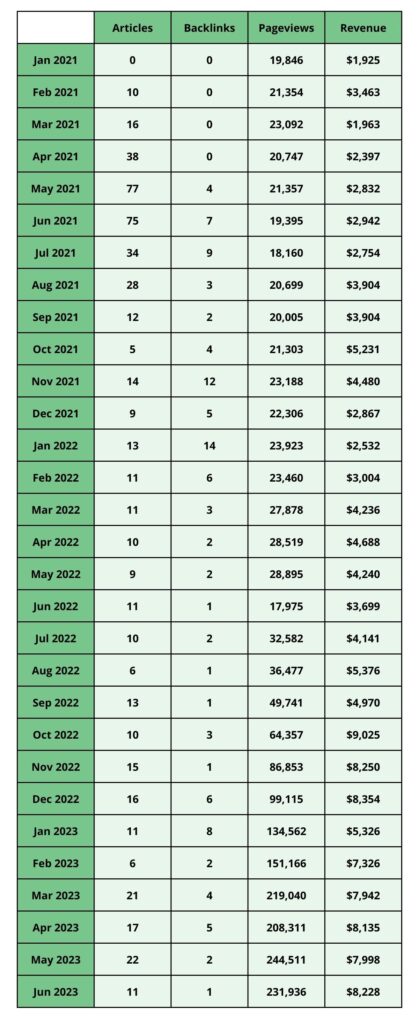
What are our plans for this website going forward? Well, the goal is to sell this digital asset. Its an incredibly attractive purchase, as it has:
- an optimized website with roughly 1,025 articles of well researched, high quality content
- an engaged email list of 5k people with average open rates of 35-45% and a history of purchasing from email
- an online video course, produced by a known expert in the niche, including a conversion optimized email funnel
- several e-book products with conversion optimized landings pages
- established vendor relationships with pre-exisiting and ongoing sales
- monthly and yearly growth in revenue, profit, and traffic
However, we’re also in no hurry to sell. In the meantime, 2023 will be a year where we continue on all fronts. Specifically, publish more content while putting a greater emphasis on our email list.
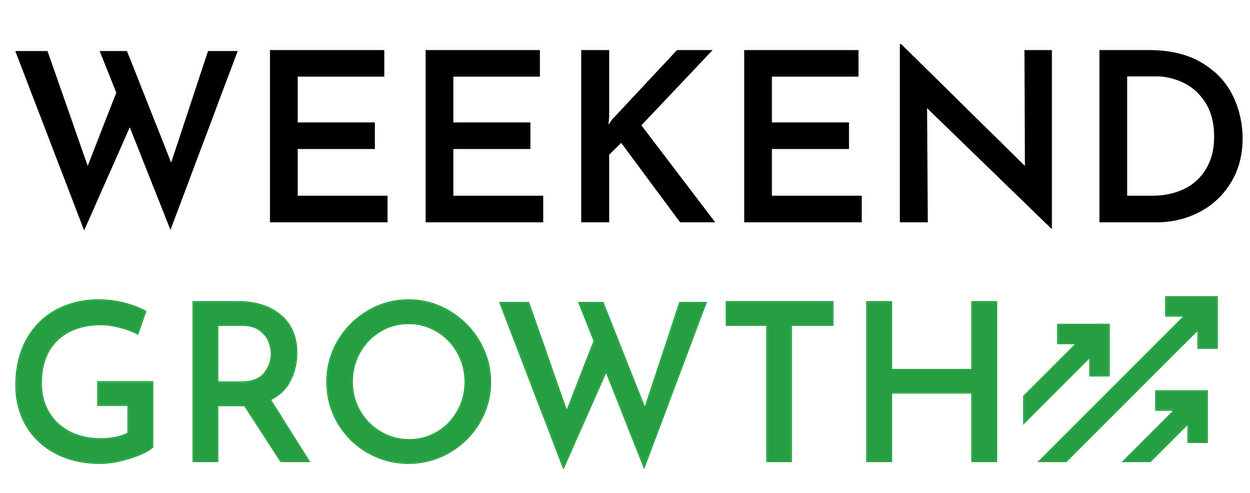





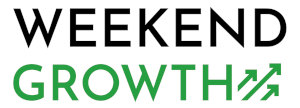
Thanks for sharing the detailed case study, Jared! I’d love to hear how the site faired over the last updates. You did everything by the book, so hopefully, it did very well!
The site dropped a bit! Somewhere in the neighborhood of 15-25%. The site gets a lot of traffic from foreign visitors, so I evaluate that differently (as RPMs and conversions are a lot lower).
Wow, what an amazing case study! Jared does an excellent job of thoroughly documenting every step of his process in acquiring and growing this website. The level of detail provided is extremely valuable for anyone looking to replicate this type of digital asset investment. It’s reassuring to see the patience and persistence required to achieve the level of success outlined here. Despite not seeing immediate results, Jared trusted the process and continued improving the site over two years. I appreciate how transparent he is about both the wins and challenges faced along the way. It’s clear a tremendous amount of strategic work went into optimizing content, links, technicals and monetization. This case serves as an outstanding example of how to purchase an underperforming site and turn it into a highly profitable online business. I”ll use this case study for inspiration for ongoning work at my website. Thanks for sharing such an inspiring case study, Jared!